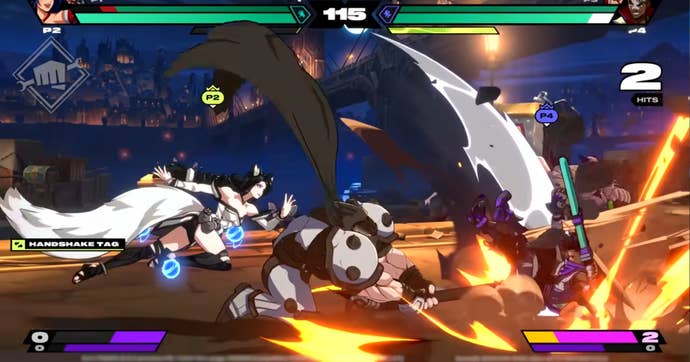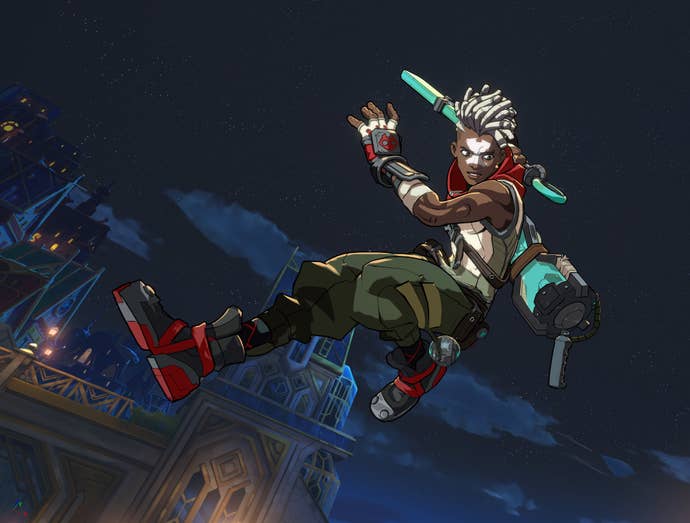Riot on Project L, its big play to enter the FGC – and the secret to how it’s making LoL characters fight
[ad_1]
Imagine this. You’re making a new entry into one of the most popular IPs in recent memory. Not only are you responsible for making a good game – a challenge all developers must tackle, really – but the task of adapting a slim selection of beloved characters has fallen into your lap. Some of these characters have been in people’s hearts for over a decade. Not only must they be faithful to original designs, they have to be fun, and fit naturally into a vastly different genre.
This is one of numerous puzzles the development team on Project L has had to tackle. The problem of legacy, and the balancing act of respecting the source material while moulding it into something that makes sense for a fighting game currently wading its way through the rapids of hype and lofty expectations.
This is a process that has been touched on only once in a blog post from developer Riot, published a year ago. But I wanted to know more. That’s why I talked with Alex Jaffe at Evo 2023, in what is one of the first (perhaps the first) press interview the team has done since the game’s official announcement. We sat on the floor of the Mandalay Bay hotel and recorded the conversation there, just like the interviews of old.
But first, some background. Alex Jaffe joined the Project L some time through its early R&D develpment. While he is now Lead Champion Designer (overseeing the progress and development of numerous champions at once), he cut his teeth on the project with work on Ekko, whose kit he designed from the ground up.
“When I designed Ekko, the very first thing I started with was writing 10 one-paragraph kits. Each paragraph captured the entire paradigm of what this character might be at the highest level. What is their gameplan? What makes them special? What are their core mechanics. Each of those paragraps was a totally different character.”
In Jaffe’s own words, the goal with this approach is to “go wide, early” on a character, pointing to the numerous ways you can take each League champion. For Ekko, the 10th paragraph (dubbed “Runback Ekko”) was the winner. A kit that allows the character to use his time rewind powers that make him unique in LoL, and use them for tricky offence and exciting approach angles.

“We put together some goals in advance on what I thought a good Ekko should look like, regardless of how the kit works. He obvously needs to feel like a time traveller, kind of genius, but also easy to get in and hit buttons with. He shouldn’t create too much frustration in the player feeling like they’re losing agency.”
“When I got to that 10th one I knew it was it. I went out and prototyped an early version of the core mechanic where he does a Chrono Strike and can rewind. I had people try it and asked if we had some juice here that could form the foundation of a kit, so we could build all the other moves around it.”
Jaffe was unwilling to share examples of the other paragraphs, however, stating that ideas left on the cutting room floor may not be left there forever. “One of the interesting things with League having so many characters is we’re very careful not to canabalize the space other characters are taking. So, like, Darius is an axe character – we have a lot of other characters with big weapons right? We might put those in the game one day […]
“It’s helpful to have constraints like that, you know what I mean? It kind of forces us to be creative, but also create guard rails we have to stay away from. So, sometimes, the reason we put a kit or design back in our pocket is because we think that would be better for another character – a character we don’t even know if we’ll ever make.”

In a role with oversight that observes numerous design “pods” (as Jaffe puts it), some of the ideas between characters can end up being be similar. It’s true that League characters themselves fall into archetypes – bruisers, tanks, assassins, and so on – so the temptation for WIP characters to fall neatly into shared traits is ever-present. But it’s here that an idea, even a good one, can be passed around. Though, more often than not, these designs are struck off.
“Something that happens a little more often than passing ideas between pods is seeing two character pods exploring a similar direction. Yes, this would be a legitimate interpretation of either character, but if our launch roster has two characters with the same core mechanic it becomes less interesting. So we have a talk and figure out which of these characters have a more natural fit with that direction, and maybe the other pod takes their character somewhere else. It doesn’t happen often – but it has happened a couple of times.”
You can see this approach play out in current Project L footage. Ekko and Yasuo are both fighters/assassins in League, but through drilling in on character-specific traits, you get two vastly different characters. With that said, not all MOBA features found in the original make for good gimmicks in a fighter according to Jaffe.
“League characters have these incredibly distilled, beautiful movesets that really capture this whole fantasy. But they don’t fit perfectly into a fighting game. If you try to translate them one-to-one (like some people think you should; using X move in this context which adds this many stacks, etc) it often just ends up feeling kinda dry, or it doesn’t fit well with the rest of the kit.”

In order to navigate this problem, Jaffe explains that the team must take some creative license: “What we’ve done is try and take the essence of what makes a character fun. What a character feels like what they’re doing – not what they’re literally doing in the mechanics.
“The way I often talk about it is like this: imagine that the character in League is an abstraction of the real character, and you as a designer are designing the real character. That, I think, lets people open up a little bit. We know these characters will have a lot more moves, so what other moves will this character have? Of course Ahri would have this weird sweep, or a long energy tendril thing. It just feels natural. We want players to feel that this has been Ahri all along – they just didn’t know it.”
As members of the public, we can only judge what we have in front of us. Judging from the Evo demo alone it is this writers’ opinion that the elaborating approach for Yasuo, EKko, Ahri, and Darius has been one of merit. It is an approach that tempts the disdain of character loyalists if done recklessly – leaving us no choice but to hold our breath and wait and see whether Jaffe and co can succeed in painting outside the borders of already popular portaits.
[ad_2]
